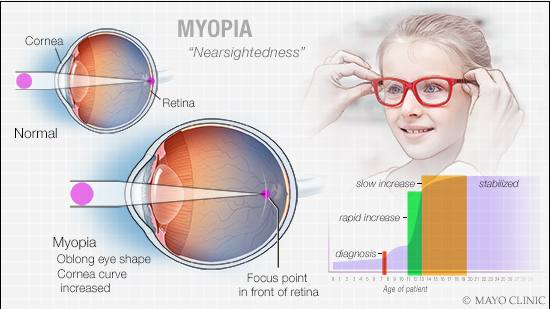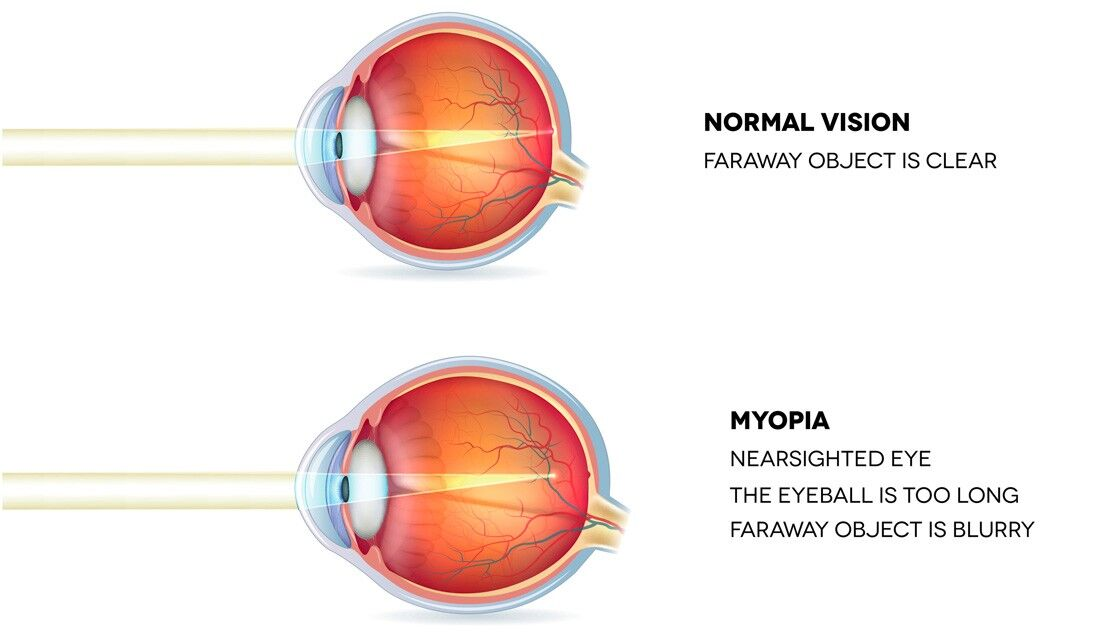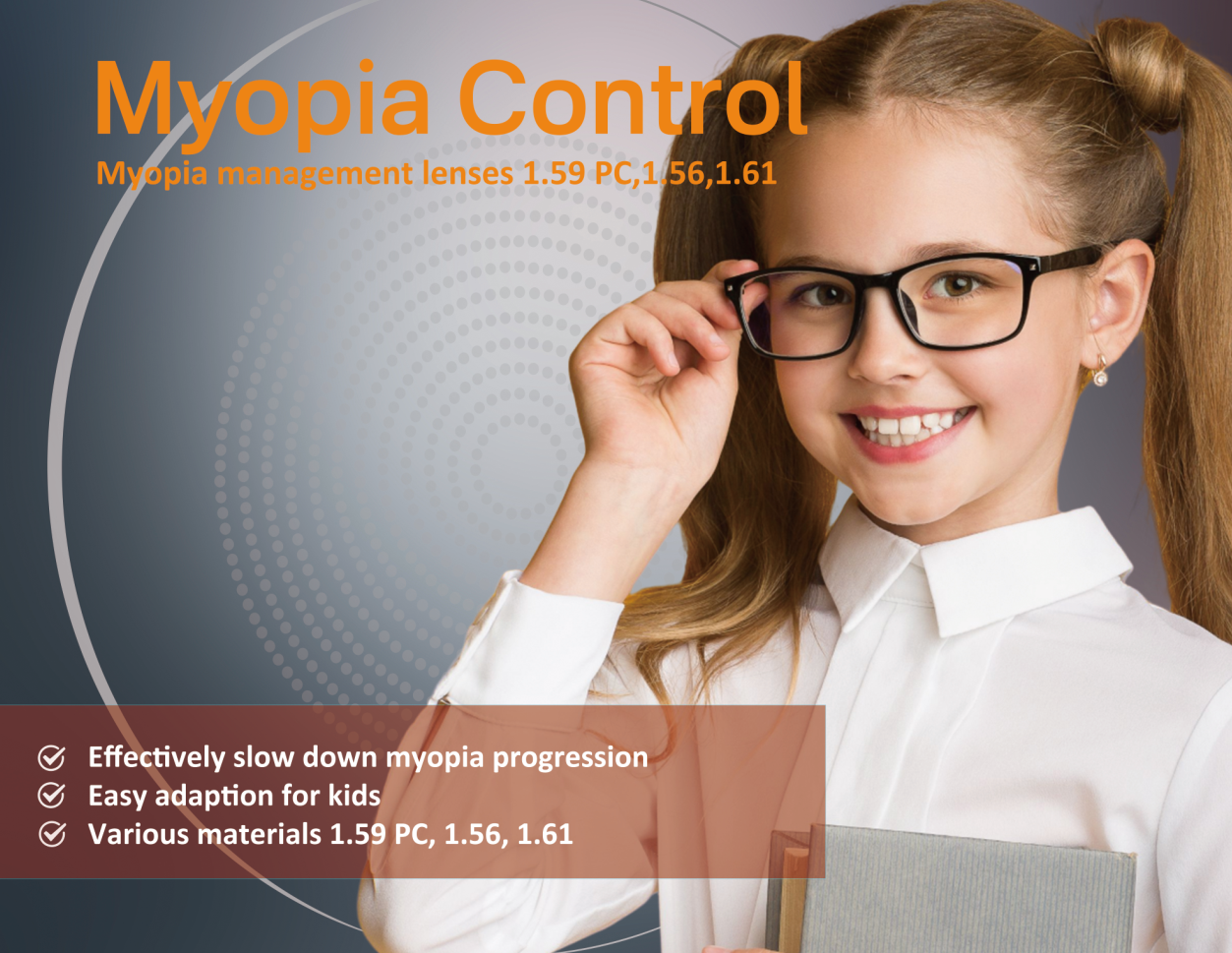In recent years, the issue of myopia among children and adolescents has become increasingly severe, characterized by a high incidence rate and a trend toward younger onset. It has become a significant public health concern. Factors such as prolonged reliance on electronic devices, lack of outdoor activities, insufficient sleep, and imbalanced diets are affecting the healthy development of children’s and adolescents’ vision. Therefore, effective control and prevention of myopia in children and adolescents are essential. The goal of myopia prevention and control in this age group is to prevent early-onset myopia and high myopia, as well as the various complications arising from high myopia, rather than eliminating the need for glasses or curing myopia.
Preventing Early-Onset Myopia:
At birth, the eyes are not fully developed and are in a state of hyperopia (farsightedness), known as physiological hyperopia or “hyperopic reserve.” As the body grows, the refractive status of the eyes gradually shifts from hyperopia toward emmetropia (a state of neither farsightedness nor nearsightedness), a process referred to as “emmetropization.”
The development of the eyes occurs in two main stages:
1. Rapid Development in Infancy (Birth to 3 Years):
The average axial length of a newborn’s eye is 18 mm. The eyes grow fastest in the first year after birth, and by the age of three, the axial length (the distance from the front to the back of the eye) increases by about 3 mm, significantly reducing the degree of hyperopia.
2. Slow Growth in Adolescence (3 Years to Adulthood):
During this stage, the axial length increases by only about 3.5 mm, and the refractive state continues to move toward emmetropia. By the age of 15-16, the eye size is nearly adult-like: approximately (24.00 ± 0.52) mm for males and (23.33 ± 1.15) mm for females, with minimal growth thereafter.
The childhood and adolescent years are critical for visual development. To prevent early-onset myopia, it is recommended to start regular vision development check-ups at the age of three, with visits every six months to a reputable hospital. Early detection of myopia is crucial because children who develop myopia early may experience faster progression and are more likely to develop high myopia.
Preventing High Myopia:
Preventing high myopia involves controlling the progression of myopia. Most cases of myopia are not congenital but develop from low to moderate and then to high myopia. High myopia can lead to serious complications such as macular degeneration and retinal detachment, which may cause vision impairment or even blindness. Therefore, the goal of high myopia prevention is to reduce the risk of myopia progressing to high levels.
Preventing Misconceptions:
Misconception 1: Myopia Can Be Cured or Reversed.
Current medical understanding holds that myopia is relatively irreversible. Surgery cannot “cure” myopia, and the risks associated with surgery remain. Additionally, not everyone is a suitable candidate for surgery.
Misconception 2: Wearing Glasses Worsens Myopia and Causes Eye Deformation.
Not wearing glasses when myopic leaves the eyes in a state of poor focus, leading to eye strain over time. This strain can accelerate the progression of myopia. Therefore, wearing properly prescribed glasses is crucial for improving distance vision and restoring normal visual function in myopic children.
Children and adolescents are in a critical stage of growth and development, and their eyes are still developing. Thus, scientifically and rationally protecting their vision is of utmost importance. So, how can we effectively prevent and control myopia?
1. Proper Eye Use: Follow the 20-20-20 Rule.
- For every 20 minutes of screen time, take a 20-second break to look at something 20 feet (about 6 meters) away. This helps relax the eyes and prevents eye strain.
2. Reasonable Use of Electronic Device
Maintain an appropriate distance from screens, ensure moderate screen brightness, and avoid prolonged staring. For nighttime study and reading, use eye-protecting desk lamps and maintain good posture, keeping books 30-40 cm away from the eyes.
3. Increase Outdoor Activity Time
More than two hours of outdoor activity daily can significantly reduce the risk of myopia. Ultraviolet light from the sun promotes the secretion of dopamine in the eyes, which inhibits excessive axial elongation, effectively preventing myopia.
4. Regular Eye Examinations
Regular check-ups and updating vision health records are key to preventing and controlling myopia. For children and adolescents with a tendency toward myopia, regular examinations help identify issues early and allow for timely preventive measures.
The occurrence and progression of myopia in children and adolescents are influenced by multiple factors. We must shift away from the misconception of “focusing on treatment over prevention” and work together to effectively prevent and control the onset and progression of myopia, thereby improving quality of life.
Universe optical provides various choices of myopia control lenses. For more information, please go to https://www.universeoptical.com/myopia-control-product/





